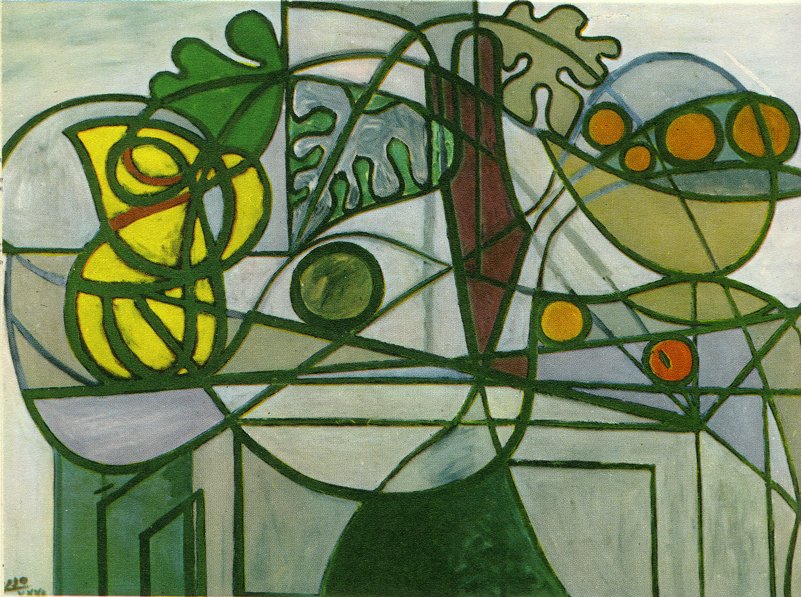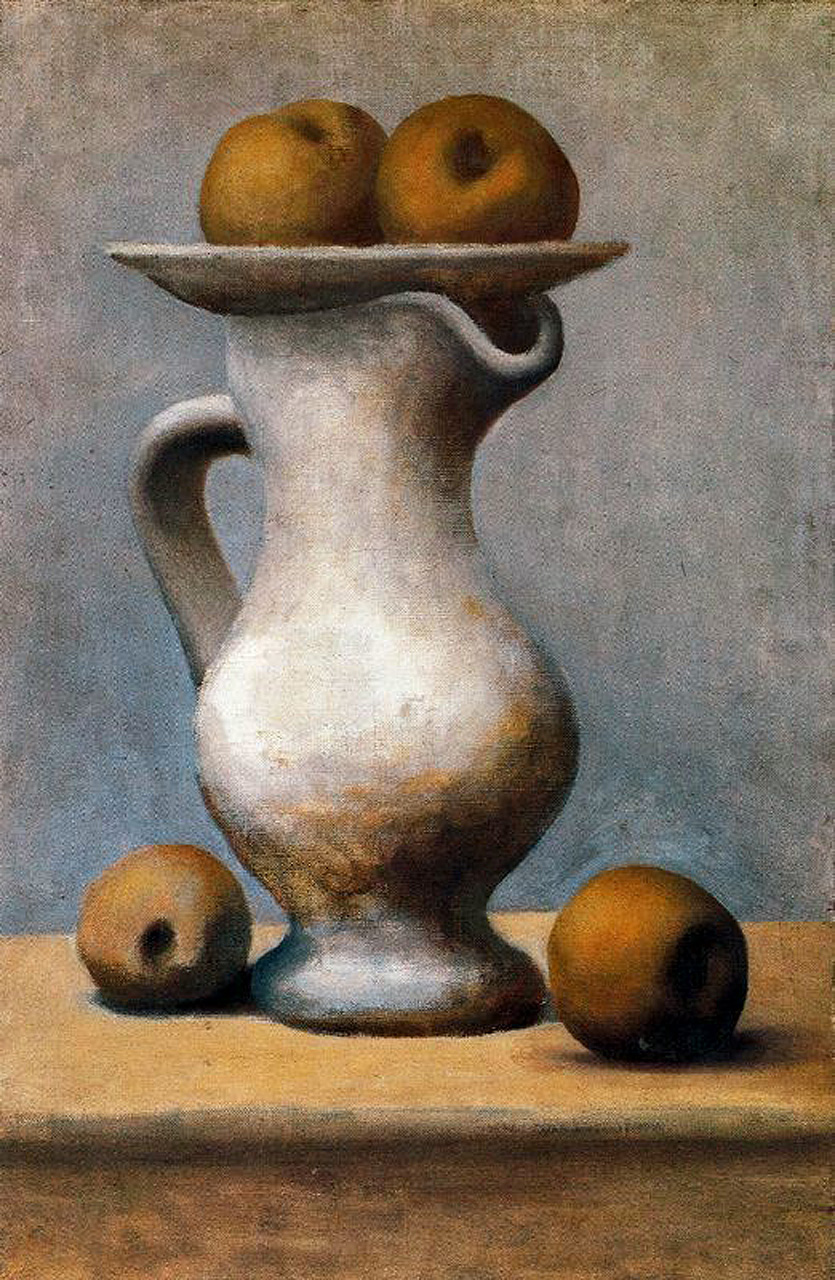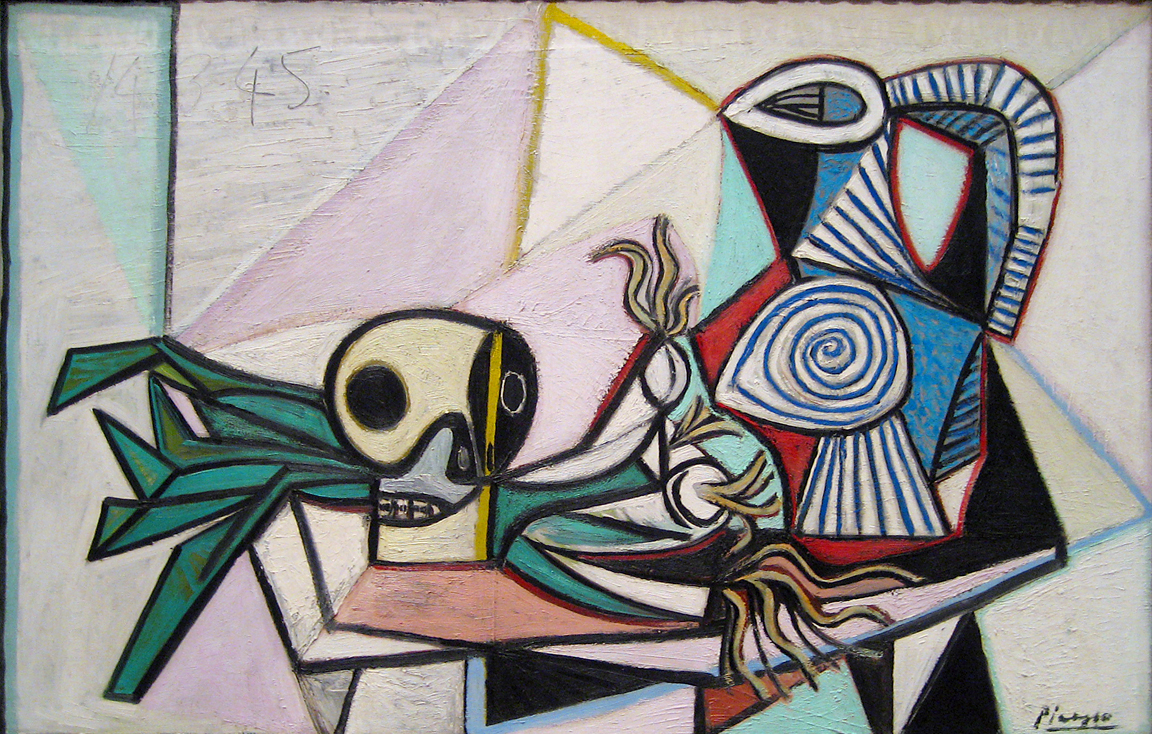
Picasso Guitar Cubist Collage Collage art, Collage art projects, Cubist art
Cubism developed in the aftermath of Pablo Picasso's shocking 1907 Les Demoiselles d'Avignon in a period of rapid experimentation between Pablo Picasso and Georges Braque. Drawing upon Paul Cezanne's emphasis on the underlying architecture of form, these artists used multiple vantage points to fracture images into geometric forms.

Still life, 1931 Pablo Picasso
October 2004 The artistic genius of Pablo Picasso (1881-1973) has impacted the development of modern and contemporary art with unparalleled magnitude. His prolific output includes over 20,000 paintings, prints, drawings, sculptures, ceramics, theater sets and costumes that convey myriad intellectual, political, social, and amorous messages.

Pin on Pablo Picasso
Still Life 1914 © Succession Picasso/DACS 2023 License this image Not on display Artist Pablo Picasso 1881-1973 Original title Nature morte Medium Painted wood and upholstery fringe Dimensions Object: 254 × 457 × 92 mm Collection Tate Acquisition Purchased 1969 Reference T01136 Display caption Catalogue entry Display caption

still life picasso Pablo Picasso( spain 18811973 ) Pinterest
Lesson 1: Cubism Salon Cubism Pablo Picasso and the new language of Cubism Braque, The Viaduct at L'Estaque Picasso, The Reservoir, Horta de Ebro Georges Braque, Violin and Palette Braque, The Portuguese Braque, The Portuguese Cubist Sculpture I Picasso, Guitar Picasso, Still Life with Chair Caning Pablo Picasso, Portrait of Daniel-Henry Kahnweiler

Still life with pitcher and apples, 1919 Pablo Picasso
Pablo Picasso's Cubism Period - 1909 to 1912. Analytical Cubism is one of the two major branches of the artistic movement of Cubism and was developed between 1908 and 1912. In contrast to Synthetic cubism, Analytic cubists "analyzed" natural forms and reduced the forms into basic geometric parts on the two-dimensional picture plane.
Art Confidence Picasso Still Life
Tate © Succession Picasso/DACS 2023 What is cubism and why was it so radical? In around 1907 two artists living in Paris called Pablo Picasso and Georges Braque developed a revolutionary new style of painting which transformed everyday objects, landscapes, and people into geometric shapes.

84 best images about Picasso Still Life on Pinterest
Still Life with Chair Caning. Pablo Picasso Spanish. 1912 Not on view Picasso made the first Cubist collage by pasting a piece of oilcloth (a waterproof fabric used for tablecloths) onto an oval canvas depicting café fare and a newspaper. For this radical act—inserting a fragment of reality into the fictive realm of painting—he ingeniously.

Pin by tangzhiqiao on Cubism Pablo picasso, Picasso paintings, Picasso still life
Picasso and Braque worked together closely during the next few years (1909-12)—the only time Picasso ever worked with another painter in this way—and they developed what came to be known as Analytical Cubism. Early Cubist paintings were often misunderstood by critics and viewers because they were thought to be merely geometric art.

Pablo Picasso Cubist Still Life Analytical Cubism the early phase of cubism, chiefly
'Still life' was created in 1914 by Pablo Picasso in Cubism style. Find more prominent pieces of sculpture at Wikiart.org - best visual art database.

The best Picasso exhibitions in France this summer Kunst Picasso, Art Picasso, Picasso Paintings
For Picasso and Georges Braque, still life was a lab for pictorial experiments. In the second lecture of the series, John Walsh, B.A. 1961, Director Emeritus.
Art Confidence Picasso Still Life
Pablo Picasso's Still Life (Art Institute of Chicago, 1953.28) (Fig. 1) is one of a series of works from his so-called linear or late Cubist mode, which spanned from late 1921 through late 1922. He produced more than 40 linear Cubist paintings during this period, all of which employ flat color fields and lines and grids of various widths.

Studio Art with Ms. Hopenwasser Inspiration Food As The Subject In Painting
Still Life with a Bottle of Rum Pablo Picasso Spanish 1911 On view at The Met Fifth Avenue in Gallery 908 Picasso painted this work in Céret, a small town in the foothills of the French Pyrenees, where he worked alongside Georges Braque (1882-1963). Their joint development of the painterly style called Cubism has become the stuff of legend.

Still life Picasso Pablo
At first glance, Picasso's Still-Life with Chair Caning of 1912 might seem a mish-mash of forms instead of clear picture. But we can understand the image - and other like it - by breaking down Cubist pictorial language into parts. Let's start at the upper right: almost at the edge of the canvas (at two o'clock) there is the handle of a knife.

Pablo Picasso (ESP) パブロ・ピカソ(西) 晩年(19251973)の作品 Art Picasso, Picasso Paintings, Picasso Drawing
The Evolution of Cubism Beginning in 1908, and continuing through the first few months of 1912, Braque and Picasso co-invent the first phase of Cubism. Since it is dominated by the analysis of form, this first stage is usually referred to as Analytic Cubism. But then during the summer of 1912, Braque leaves Paris to take a holiday in Provence.

Pablo Picasso Picasso still life, Picasso cubism, Pablo picasso art
Pablo Picasso, Spanish painter, sculptor, printmaker, ceramicist, and stage designer, one of the most-influential artists of the 20th century and the creator (with Georges Braque) of Cubism. Among his best-known works are Les Demoiselles d'Avignon (1909) and Guernica (1937).

Pablo Picasso Cubism Still life with lemons Pablo Picasso Henri Matisse
Pablo Picasso, 1962; Argentina.Revista Vea y Lea, Public domain, via Wikimedia Commons. He is globally considered to be one of the 20th century's most important and acclaimed painters.As an artistic pioneer, he is credited with being a founding member of the Cubist movement with Georges Braque. Cubism was a cultural movement that forever altered the landscape of European sculpture and.